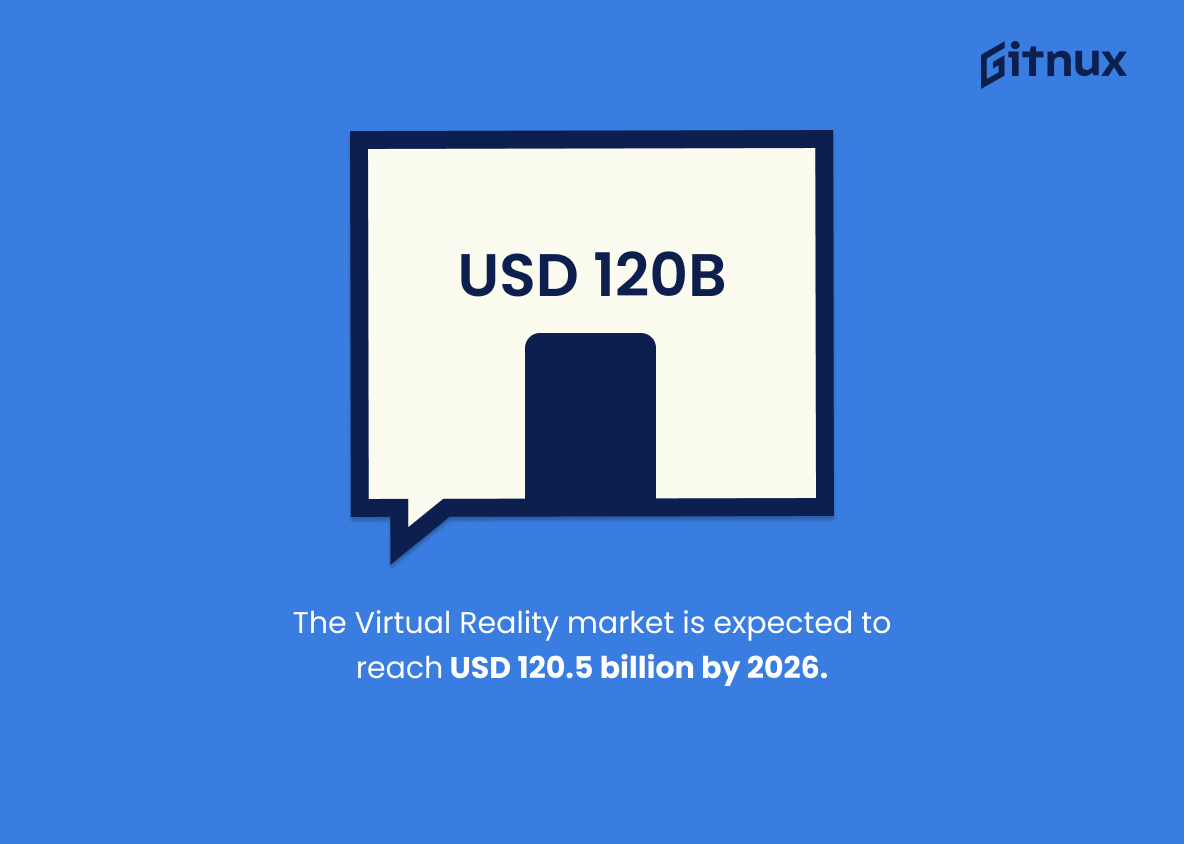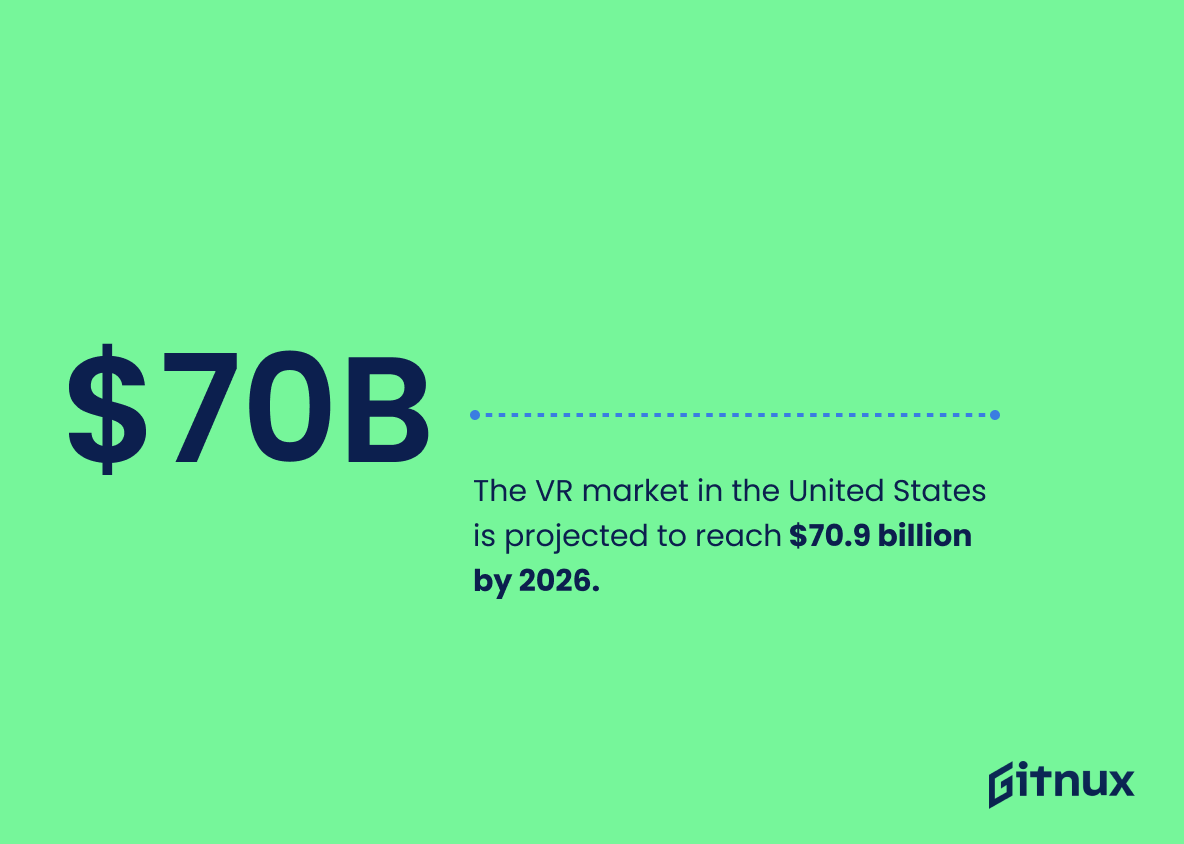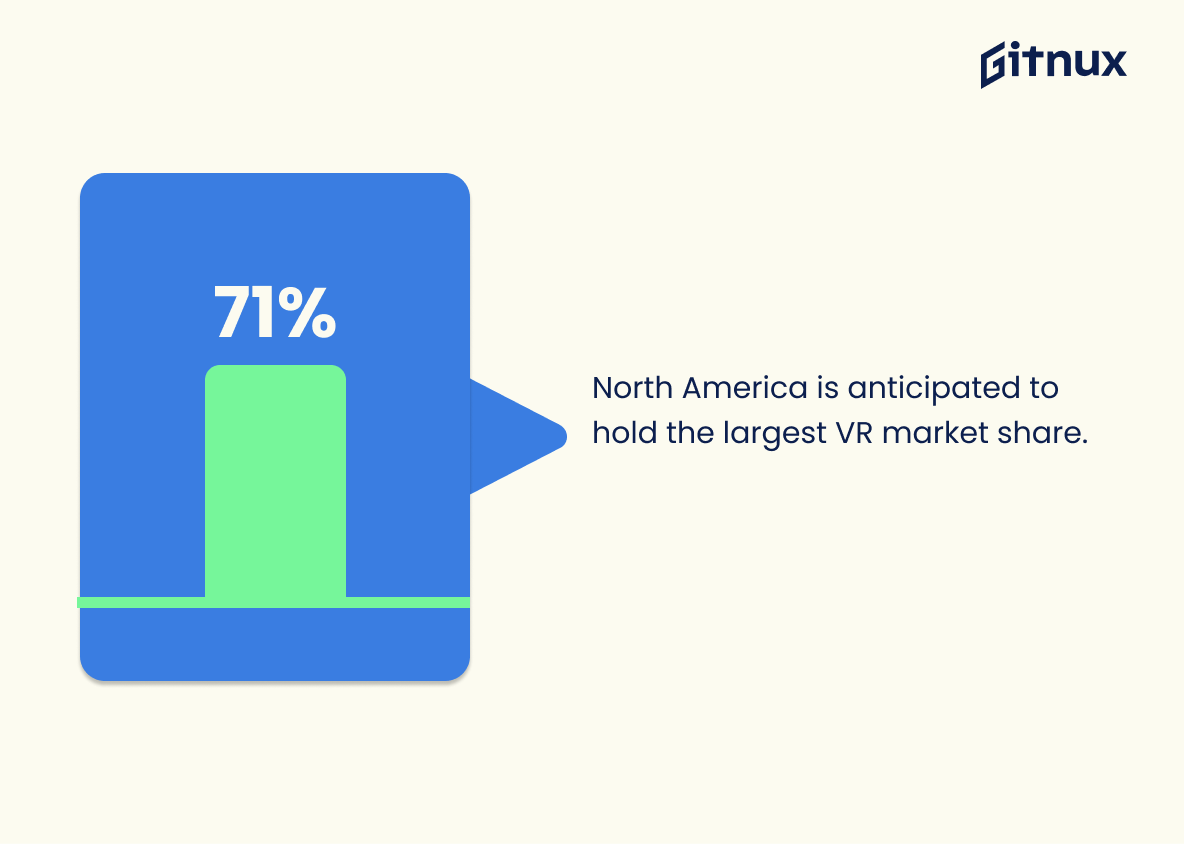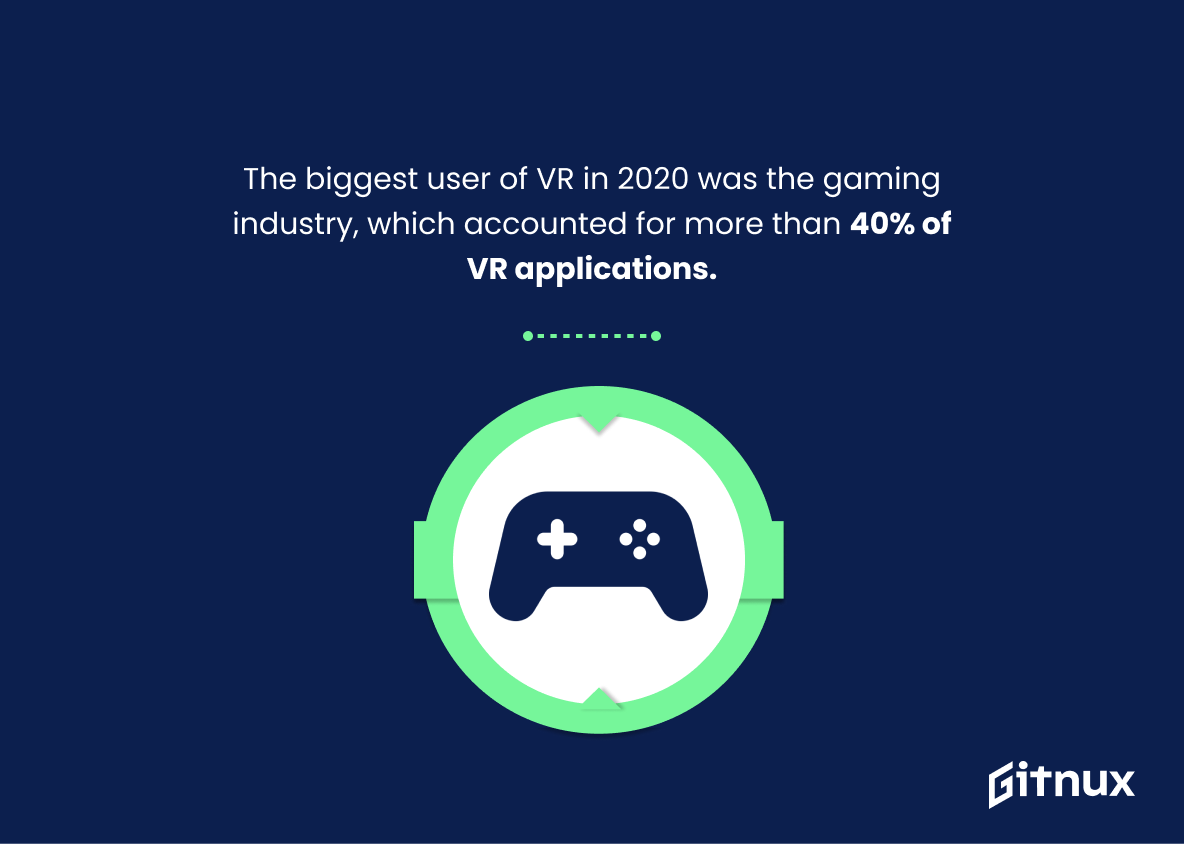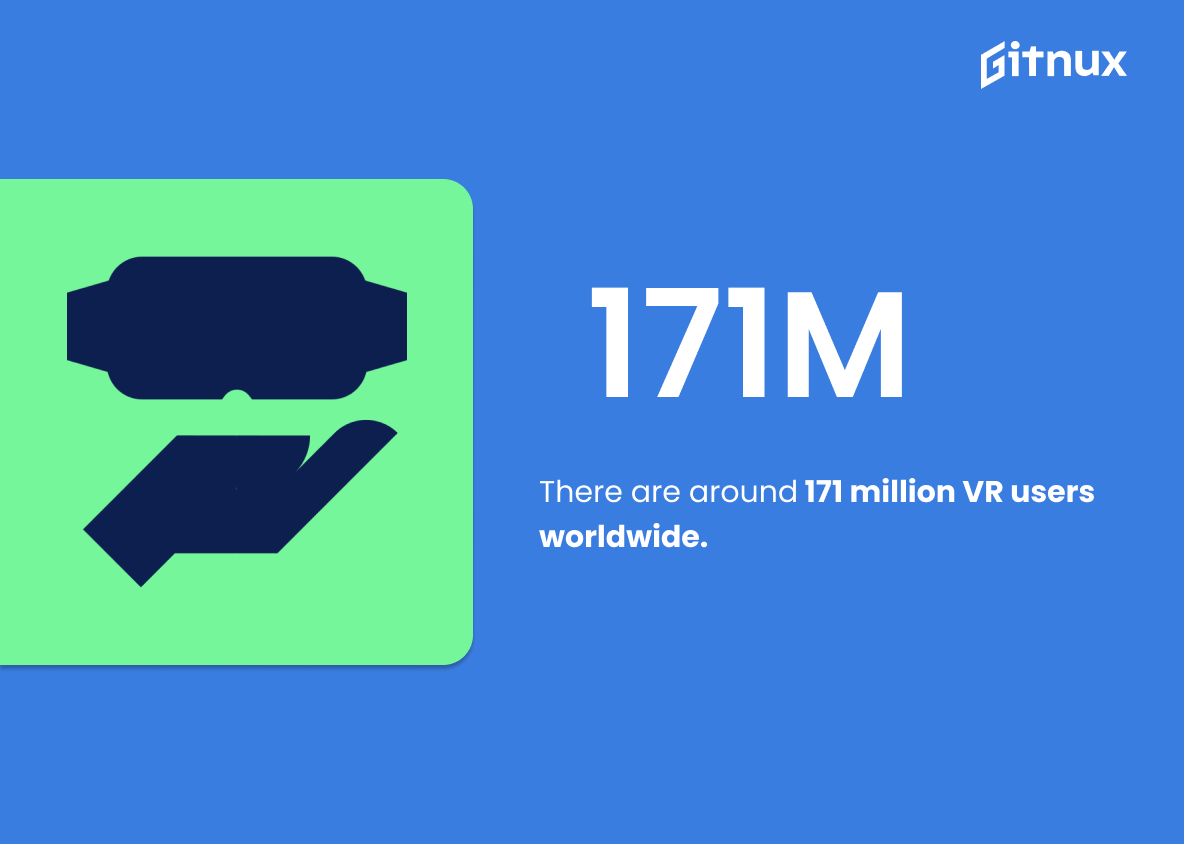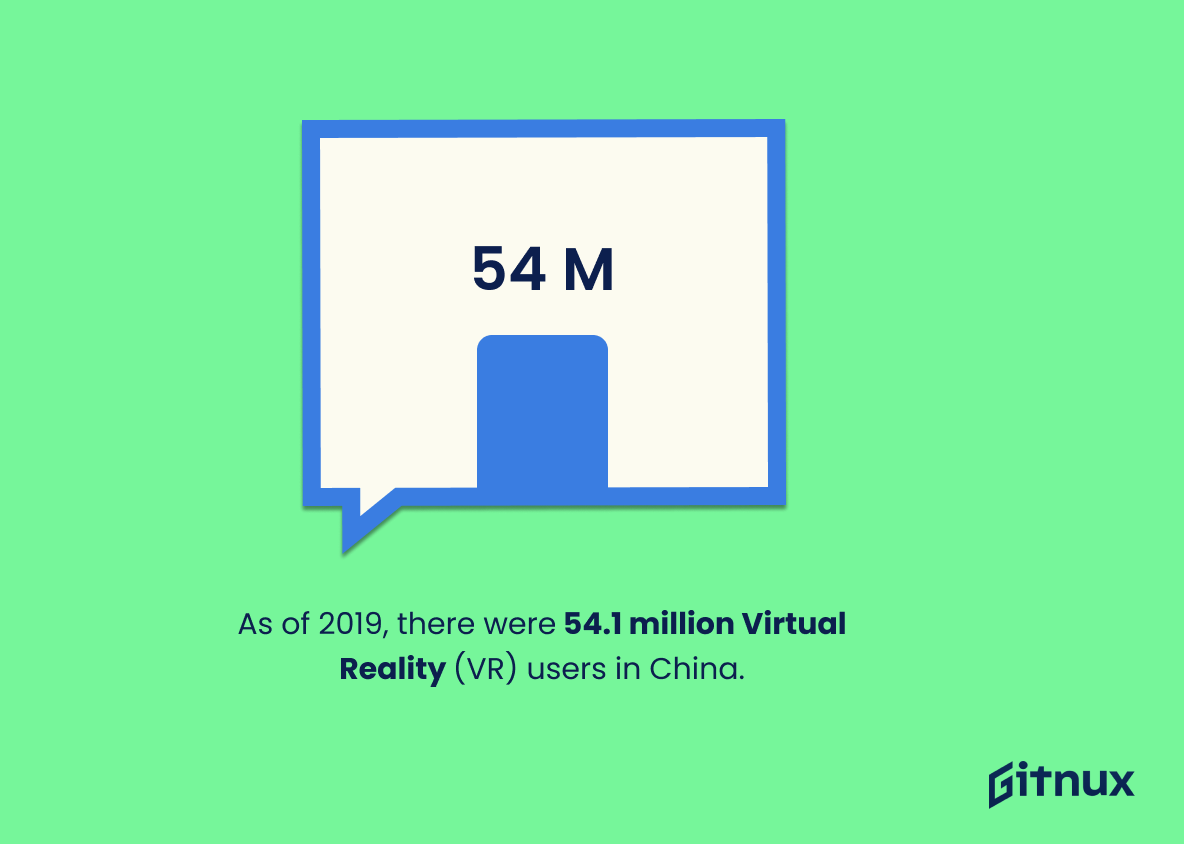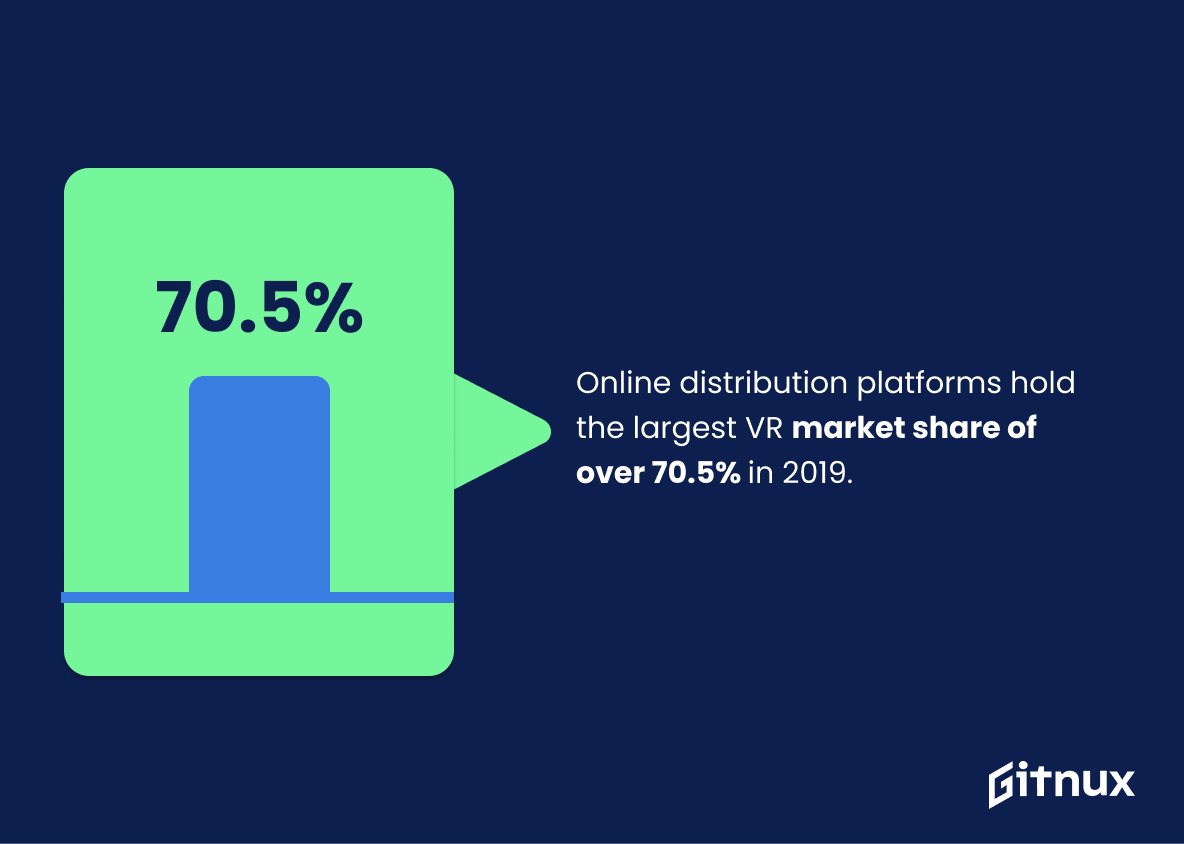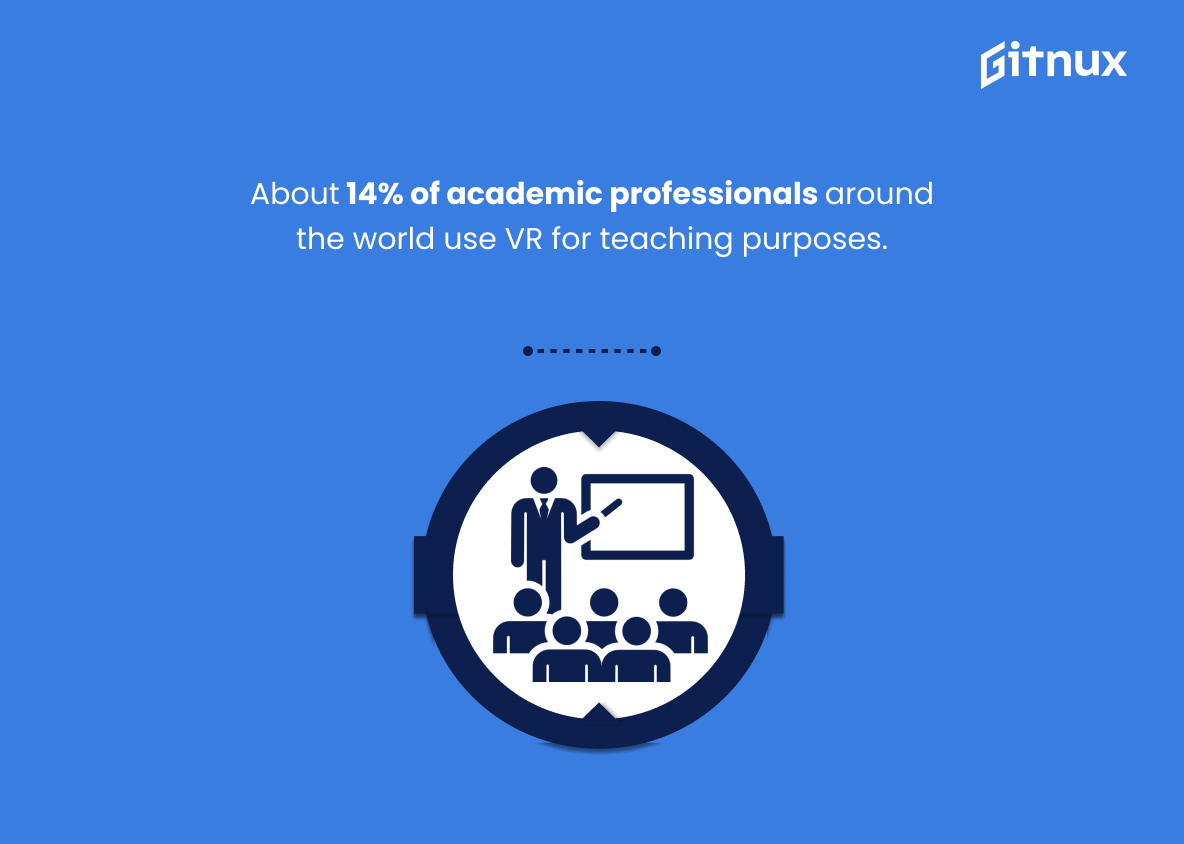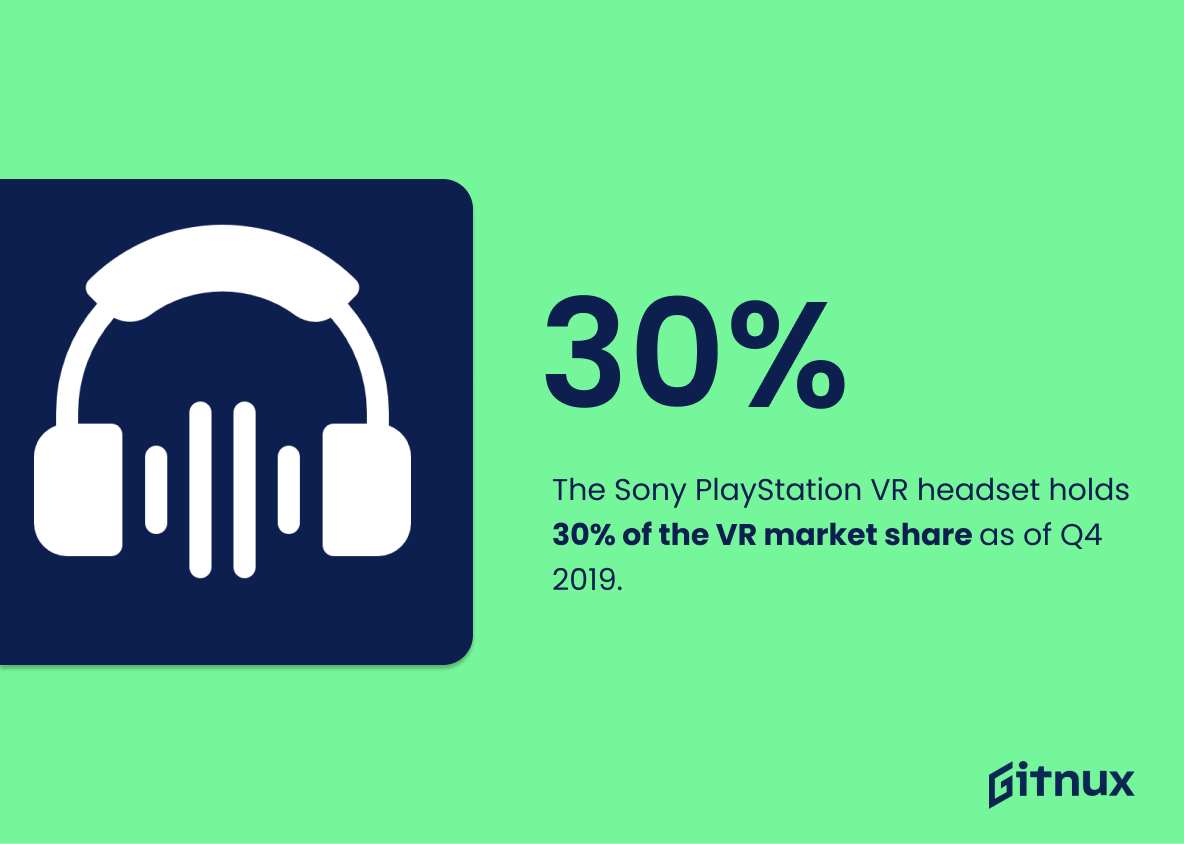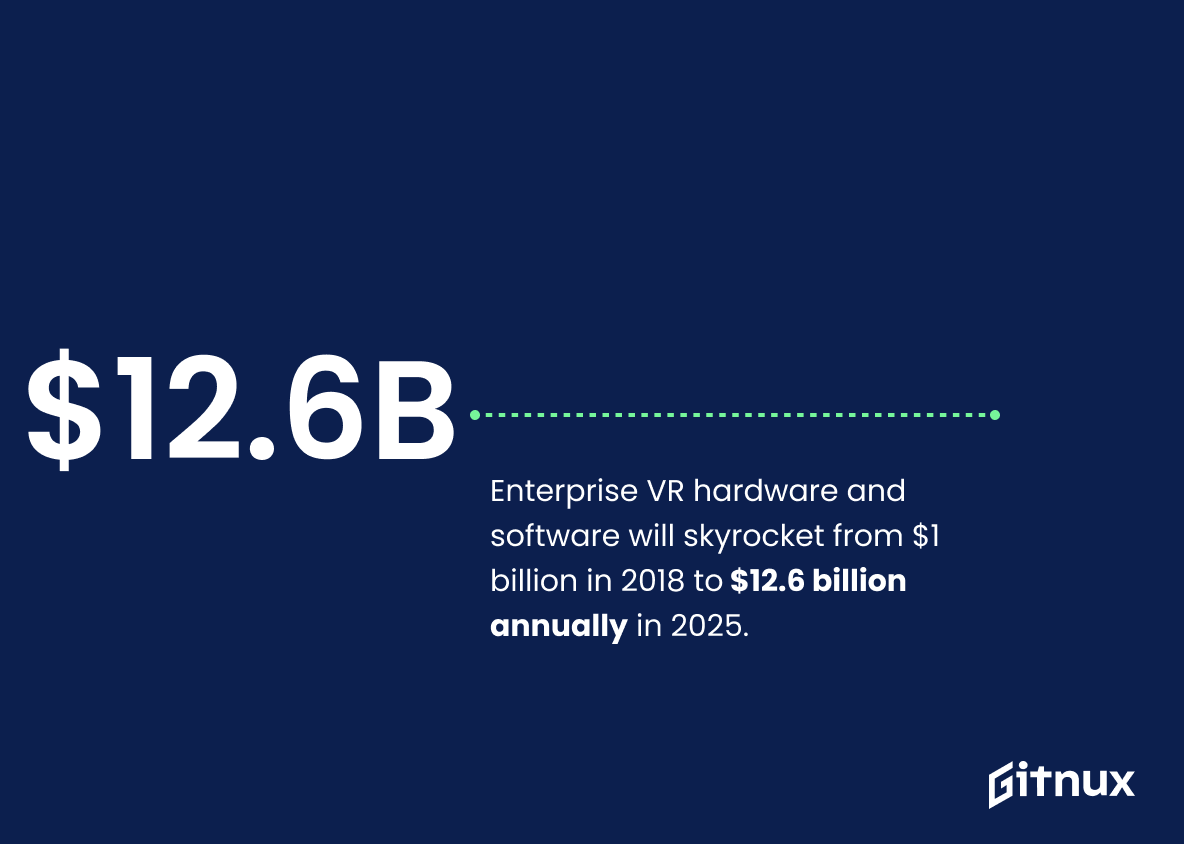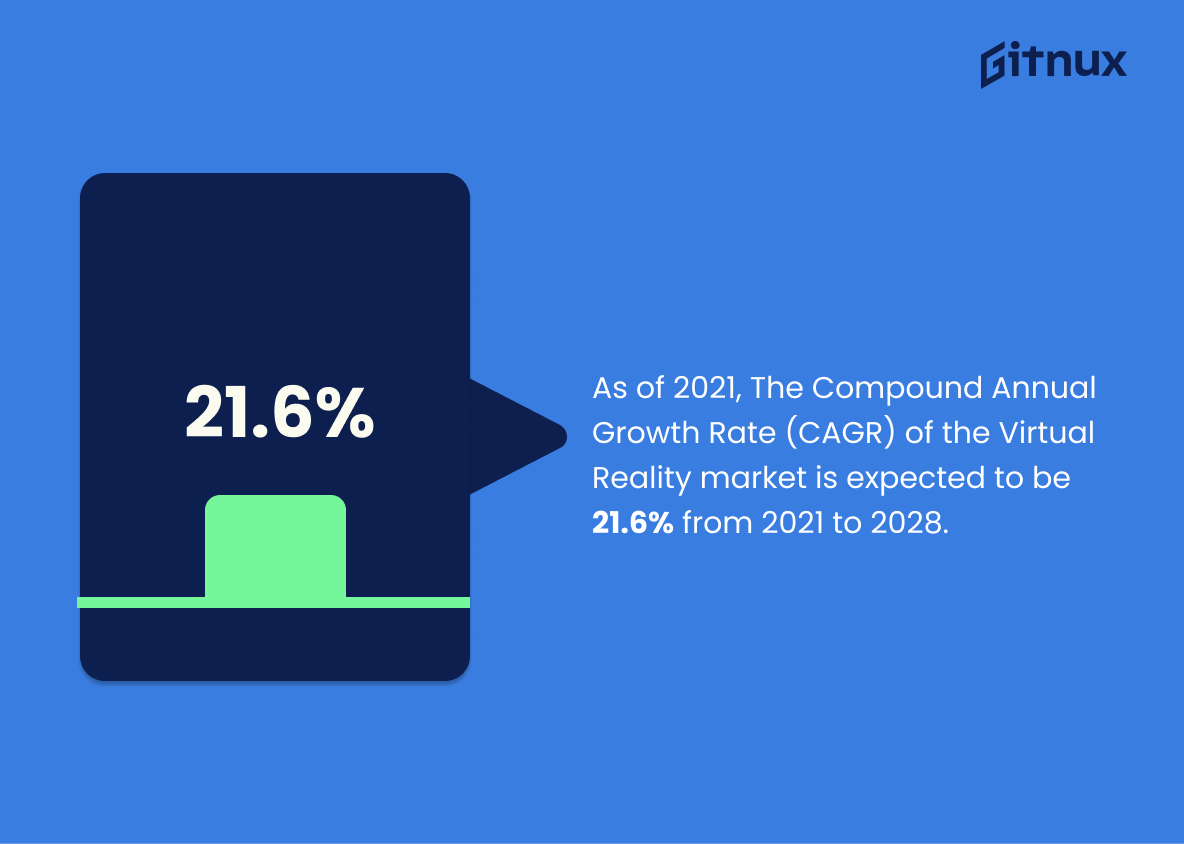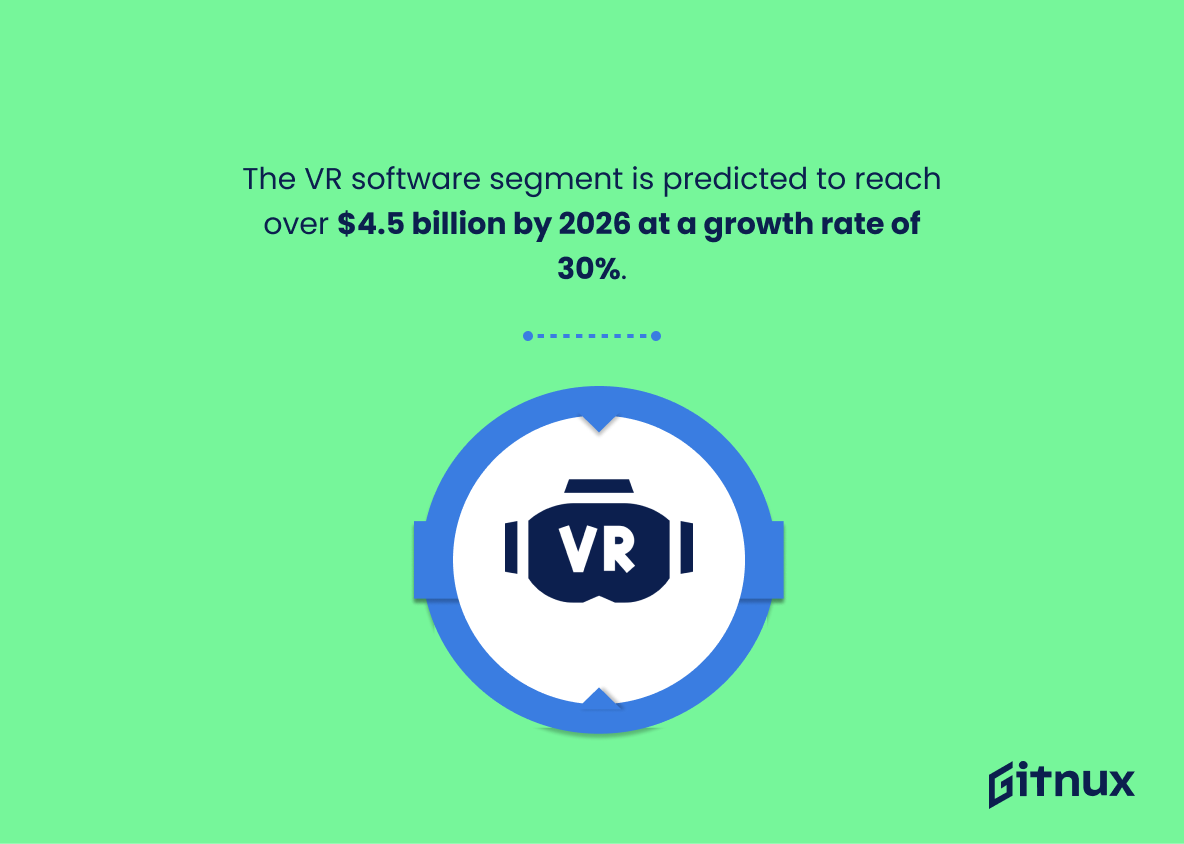In the mesmerizing universe of technology, the emergence of Virtual Reality (VR) has rewritten the rules of interaction, communication, and experience. It has not just transcended the boundaries of imagination but has significantly disrupted various industries, laying the groundwork for a future that feels like a science fiction becoming reality.
As this vibrant and innovative industry continues to evolve and expand, it’s vital for businesses, investors, and tech-enthusiasts to understand its trajectory. Our latest blog post delves into the world of VR, unmasking interesting facts, key trends, and insightful statistics that outline the present landscape and speculate the future of the Virtual Reality industry.
The Latest Virtual Reality Industry Statistics Unveiled
The global virtual reality market size was valued at USD 15.81 billion in 2020.
Gazing at the expanse of the digital landscape, the ‘USD 15.81 billion’ numbers sit like a towering skyscraper in 2020’s Virtual Reality (VR) marketplace. It’s not just a figure; it paints a vibrant picture of how this immersive technology is transforming the world around us. This data snapshot illuminates the accelerating growth and mainstream acceptance of VR applications.
From gaming to healthcare to education, VR has unbarred unprecedented possibilities, and its staggering market value reflects its increasing penetration and adoption rate across industries. The hefty valuation is a testament to VR’s untapped potential and how the tech world is riding high on this digital wave. It provides an insightful perspective, helping us gauge the existing market dynamics and futuristic trends in our blog post discussion about the VR industry.
The Virtual Reality market is expected to reach USD 120.5 billion by 2026.
Forecasting mammoth growth to an impressive USD 120.5 billion by 2026, the Virtual Reality market’s potential and impact on technological terrain is not to be brushed aside. To paint a clear picture in a blog post about Virtual Reality Industry Statistics, this projected expansion underscores the increasing influence and adoption of Virtual Reality by consumers and businesses alike. The statistic is not just a number—it’s a testament to the transformative power of VR technology and represents tantalizing opportunities, heightened interest, and a future evidently dominated by immersive virtual experiences.
The VR market in the United States is projected to reach $70.9 billion by 2026.
With the projection of the U.S. VR market ballooning to an impressive $70.9 billion by 2026, it paints a clear picture of a burgeoning industry on the fast track to ubiquity. Serving as an unequivocal signal of its potential, this figure carries substantial weight for stakeholders navigating the VR landscape.
This projection is not just a number, but a roadmap for entrepreneurs, investors, and technologists, charting the course towards a future where Virtual Reality becomes an inseparable part of our lives. The profound impact of such financial growth on advances in technology, accessibility, and market competition underscores the transformational role that VR is poised to play both in the U.S. and the global digital arena.
North America is anticipated to hold the largest VR market share.
Anticipating North America to seize the lion’s share of the VR market is a powerful insight when probing into the Virtual Reality Industry Statistics. Demonstrating this potential dominance not only places North America as a pivotal player in the global VR industry, but it also uncovers a wealth of opportunities for businesses within this region to leverage.
It could guide their strategic decisions, investments, and potential partnerships. Furthermore, pinpointing North America’s status encourages other businesses worldwide to consider it as a crucial market to penetrate, driving potential collaborations, technology diffusion, and even competition. Thus, these statistics uncloak the canvas upon which the future VR industry landscape could be painted.
The biggest user of VR in 2020 was the gaming industry, which accounted for more than 40% of VR applications.
Drawing light on a striking fact, the gaming industry was the dominant domain, triumphantly capturing over 40% of VR applications in 2020. This gives readers a thought-provoking perspective into how significantly Virtual Reality has permeated the sphere of gaming.
Moreover, this intriguing data piece serves as a testimony to the tech-savvy nature of this industry, while simultaneously raising questions about the impending potential for growth and diversification in other less traditionally tech-heavy sectors. This trend further underscores the immense possibilities VR holds for enhancing user experience in gaming and introduces fertile grounds for speculation about what’s next in this field.
There are around 171 million VR users worldwide.
Imagine soaring through the breathtaking landscapes of an alien planet, diving deep into the ocean’s most hidden corners, or walking through the devastating trenches of historical war zones — all from the comfort of your own home. Welcome to the world of Virtual Reality (VR). This technology once seemed like a distant dream, but today, our global community boasts approximately 171 million VR users.
This captivating figure not only highlights the current popularity of VR technology but also sets the tone for the vast potential growth in the industry. It serves as a testament to VR’s increasing accessibility, technological advancements, and broader acceptance.
In this expanding universe of VR, the 171 million VR users are not merely passive participants. Rather, they represent an assembly of tech-savvy pioneers and forward-thinking consumers. Their burgeoning numbers translate to an ever-growing market, eager for cutting-edge experiences and revolutionizing old norms of entertainment and education. Let us therefore plunge into this fantastical realm, unraveling the multi-layered, mighty impact of VR on our world.
As of 2019, there were 54.1 million Virtual Reality (VR) users in China.
Highlighting the staggering figure of 54.1 million VR users in China as of 2019 delivers a powerful perspective on the immense penetration and potential inundation of VR technology within a singular country. A statistic of this magnitude not only punctuates the accelerating growth trajectory of the VR industry, but it also emphasizes China’s significant contribution to this digital revolution.
Through this lens, it inspires a discussion regarding the extensive possibilities for VR applications in different sectors like gaming, education or healthcare within China’s vast consumer market. Ultimately, it paints an intriguing canvas of what to expect from the burgeoning VR arena globally, with China leading the pack.
41% of adults are interested in Virtual Reality.
Peering into the intricacies of this captivating statistic, we unearth a crucial implication. Notably, 41% of adults brandishing interest in Virtual Reality forms a golden opportunity for the VR industry. This percentage not only constitutes a significant chunk of potential customers awaiting targeted marketing efforts but also reveals a promising scope for growth in an industry thriving on technological progression.
In the vast landscape of VR industry statistics, this figure sets the stage for enlightened discussions on user engagement, market trends and future projections. Hence, it fuels informed decisions for strategists, marketers, and innovators alike, all racing to surge ahead in the exciting Virtual Reality frontier.
Online distribution platforms hold the largest VR market share of over 70.5% in 2019.
Diving deep into the realm of Virtual Reality Industry Statistics, one cannot help but be captivated by the power that online distribution platforms have come to wield. Their commanding dominance is brilliantly underscored by their strapping VR market share, towering at an overwhelming 70.5% in 2019. This data sends strong shockwaves across the industry, underscoring the significance of these platforms as prominent marketplaces in the transaction of VR products.
Notably, it enlightens readers and industry players about the platforms that are currently steering the VR industry’s direction, consequently aiding in strategic planning and trend analysis. Furthermore, it provides a promising viewpoint for investors and stakeholders, casting a spotlight on where significant growth and potential exist in this rapidly evolving industry.
About 14% of academic professionals around the world use VR for teaching purposes.
Immersing ourselves in this digital figure that infers that around 14% of academic professionals globally harness VR in their teaching endeavors, we indubitably acknowledge the burgeoning influence of Virtual Reality (VR) in the academic realm. This figure serves as a testament to the growing acceptance and integration of advanced technology in pedagogy, demonstrating that educators are effortful in adopting pioneering platforms to deliver impactful learning experiences.
What’s more, this percentage not only reflects contemporary trends but also foreshadows the forecasted evolution in the larger VR industry. The encouraging uptake in academia could potentially serve as an impetus for further development and adoption across disparate fields, ergo bolstering the overall growth trajectory of the industry.
As such, this figure acts as both a status report on the VR industry’s current penetration into academia and a barometer for its future in the broader spectrum of sectors. From the viewpoint of industry stakeholders, investors, and innovators, understanding such usage patterns is of paramount importance to gauge market trends, identify investment opportunities, and inspire innovative developments.
The Sony PlayStation VR headset holds 30% of the VR market share as of Q4 2019.
Taking a deep dive into the ocean of virtual reality industry statistics, one can’t ignore the impressive tidal wave created by Sony PlayStation VR, impressively occupying 30% of the VR market share as of Q4 2019. This striking figure not only highlights Sony’s tech titan’s influential presence, but also provides a litmus test on the VR market as a whole, giving hints about VR adoption rates amongst gaming enthusiasts.
Moreover, it invites other industry players and potential investors to navigate the undercurrents of the market, analyze consumer preferences, and plot a course towards potentially lucrative opportunities in the ever-evolving virtual reality landscape.
Only 8% of American households own a VR headset.
Peering through the prism of virtual reality industry insights, the figure of mere 8% American households owning a VR headset takes center stage. Acting as the pulse of VR technology adoption, this percentage is integral in gauging the current market penetration, consumer acceptance, and the potential scope for growth.
A seeming void in VR ownership hints at untapped market potential appearing as an expansive horizon for VR businesses. Conversely, it imitates an industry challenge to bolster product adoption – a clarion call for promotions, affordability and technological advancements. The 8% is not simply a number but a guide for VR industry strategies, areas of focus, and future ventures.
Enterprise VR hardware and software will skyrocket from $1 billion in 2018 to $12.6 billion annually in 2025.
The statistic, pointing out the projected surge of Enterprise VR hardware and software from a modest $1 billion in 2018 to an overwhelming $12.6 billion annually by 2025, sends a powerful message. It illuminates an inescapable trend in the Virtual Reality industry, emphasizing that we are at the precipice of a VR revolution. This explosive tenfold growth underscores the momentum of this technological domain.
It brings into sharp focus how VR is transitioning from a niche, mostly recreational avenue to a mainstream, comprehensive solution that enters corporate strategies. It serves as compelling evidence that any serious discussion about the technological landscape of the future would be incomplete without taking this demographic into account.
As of 2021, The Compound Annual Growth Rate (CAGR) of the Virtual Reality market is expected to be 21.6% from 2021 to 2028.
Feasting your eyes on the astounding 21.6% CAGR projection for the Virtual Reality market from 2021 to 2028, you may marvel at the potential of this burgeoning industry. But what does this number ignite in our minds? It signifies more than just a figure. It serves as a testament to the relentless evolution of tech-industries, underlining the ceaseless opportunities that lay ahead for businesses and innovators alike.
Imagine stepping onto a playing field that expands by nearly a quarter each year – the prospect is electrifying. This much-anticipated growth trajectory lays a solid foundation for industry pioneers, enticing investors, and emboldening entrepreneurs to dive confidently into the realm of virtual reality. It adds a validity to strategies, a confidence to predictions and a future of formulating immersive experiences that are yet to leave their footprints on the sand of time. In the blog post-context, this statistic transcends readers to a future teeming with infinite potential, reasserting the relevance of Virtual Reality in our digital tomorrow.
The VR software segment is predicted to reach over $4.5 billion by 2026 at a growth rate of 30%.
In the vibrant panorama of Virtual Reality Industry Statistics, this particular projection serves as both a lighthouse and a booster rocket. Clocking in at a staggering $4.5 billion prediction for the VR software segment by 2026, it underlines the industry’s undeniably robust growth prospects. And the 30% growth rate? It’s not just a number—it’s the drumroll of an accelerating cadence in the technology marketplace.
This means that Virtual Reality, previously an esoteric side note, is now raring to don the mantle of mainstream significance, crafting an incredible harmony between commercial success and technological sophistication. It serves as an invaluable navigation point for investors who want to ride the wave and for innovators creating the next big thing in the VR industry.
Virtual reality users on Steam reached a total peak count of 2.6 million users in August 2021.
Drawing from the seismic shift, it is quite intriguing to examine the swelling wave of virtual reality engagement. The milestone of 2.6 million peak users on Steam in August 2021 offers a tantalizing glimpse into the dynamism of the Virtual Reality industry. This figure, not just an isolated number, lends credence to the burgeoning popularity and increasing acceptance of VR platforms among gaming aficionados.
It serves as a beacon, elucidating the VR industry’s potential for profitability and growth, making it a pivotal point of discussion in mapping out the trajectory of the virtual reality sphere. This soaring user base underscores a pervasive evolution of consumer behavior and technological prowess in the world of gaming, offering vital cues for the next leap forward for business strategies, investment decisions, and innovation roadmaps.
The Health sector VR market is expected to reach $33.72 billion within 2027.
In the constantly evolving landscape of the Virtual Reality Industry, the projected growth of the Health sector VR market to an astronomical $33.72 billion by 2027, serves as a compelling beacon of promise. This captivating prediction paints a picture not just of gargantuan financial gains, but also of emerging possibilities that could revolutionize healthcare.
Imagine countless lives improved and even saved, with the application of VR technology in medicine. This thriving trend also suggests lucrative opportunities for tech entrepreneurs, innovators, and investors seeking to dip their toes in the VR industry. Ultimately, this statistic isn’t just a snapshot of future fortune, but a window into the potentiality that borders on the realm of science fiction becoming our tangible reality.
As of September 2021, 2.31% of all Steam users have a VR Headset.
Casting a spotlight on the significance of the statistic ‘As of September 2021, 2.31% of all Steam users have a VR Headset’, it underscores a vital aspect of the current virtual reality landscape. This measurable fact not only tells an emerging story of technology adoption in the dynamic world of gaming but also signals robust potential growth for the VR industry.
As Steam users represent a substantial segment of the global gaming population, this statistic becomes a meaningful barometer of how VR technology is penetrating this market. With a seemingly modest figure of 2.31%, it gives an insight into the present scenario of VR usage, subtly hinting towards an extensive untapped market, ripe for expansion and probable mass adoption in the near future.
In a nutshell, within the virtual reality industry narrative, this statistic serves as a pivotal plot point, breathing life into the numbers and depicting a story of an industry on the brink of major takeoff.
In 2024, Virtual Reality technology in the Education Sector is projected to reach $1.7 billion.
Establishing the vast potential of Virtual Reality (VR) technology, the projected figure of $1.7 billion in the education sector by 2024 underscores the expansive economic trajectory of the VR industry. It paints a remarkable portrait of profitability, investment appeal and most importantly, the integral role VR is poised to play in shaping educational methodologies in the near future.
Such an influential prediction reinforces the necessity of incorporating VR insights not only for technophiles but also for educators, policymakers, investors, and entrepreneurs who are keen to ride the next wave of technological evolution. Standing on the brink of a ‘VR in Education’ revolution, this striking statistic serves as a monetized forecast of the learning revolution, proving a vital inclusion for a blog post dissecting VR industry statistics.
Conclusion
The virtual reality industry is undoubtedly undergoing massive growth, fuelled by technological advancements and increasing worldwide adoption. The statistics portray a very positive picture of the industry’s future, with billions of dollars in revenue expected over the next few years. The rise of VR applications across various sectors, from gaming and entertainment to education and healthcare, is a testament to its limitless potential.
The continuous investments in this industry will lead to innovative solutions, making VR more accessible and immersive. As we keep pace with the exciting changes, the statistics we see today in the VR industry will certainly be surpassed, redefining our understanding of what is technologically possible.
References
0. – https://www.www.abiresearch.com
1. – https://www.www.statista.com
2. – https://www.backlinko.com
3. – https://www.www.mediapost.com
4. – https://www.www.reportlinker.com
5. – https://www.arpost.co
6. – https://www.www.spuriouscorrelations.com
7. – https://www.www.grandviewresearch.com
8. – https://www.www.prnewswire.com
9. – https://www.www.elearninglearning.com
10. – https://www.www.alliedmarketresearch.com
11. – https://www.trivver.com
12. – https://www.blog.globalwebindex.com
13. – https://www.uploadvr.com
14. – https://www.www.gminsights.com
15. – https://www.www.globenewswire.com

